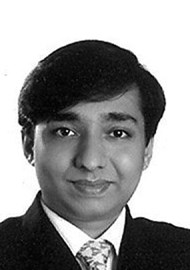There has been a recent interest in the use of bone morphogenetic protein-7 (rhBMP-7) to augment the floor of the maxillary sinus. Loss of teeth in the posterior maxilla results in rapid horizontal and vertical reabsortion of alveolar bone because of the lack of interosseous stimulation by periodontal ligaments. The absence of maxillary molars leads to increased activity of osteoclasts in Schneider’s membrane, which causes pneumatisation of the sinuses within a few months because of the resorption of bone. While most of the materials that have been used to graft and augment the sinuses, including the commonly used bovine bone mineral, are osteoconductive, the BMPs in contrast induce mesenchymal stem cells to differentiate into osteoblasts and produce new bone tissue. Animal studies have shown that rhBMP-7, also called osteogenic protein 1 (rhOP-1), stimulates bony regeneration and reduces healing time in sinus augmentation. In this in vivo study, the authors used radiological and histological assessment to evaluate the healing response and bone formation in the maxillary sinus stimulated by rhOP-1 in a collagen carrier with the use of rhBMP-7 versus bovine hydroxyapatite. Nine consecutive patients with bilateral posterior maxillary atrophy who required augmentation of the sinus for interposition of implants were treated simultaneously with rhBMP-7 (Osigraft) with deproteinised bone substitute (0.5g on the test side) and with deproteinised bone alone (2.0g on the control side). Computed tomographic images preoperatively, immediately postoperatively, and at four months postoperatively showed a mean (SD) postoperative gain of 10.8(3.0)mm on the test side and of 10.2(1.8)mm on the control side. Histological and histomorphometric analyses of biopsy specimens showed that there was significantly more new bone on the control side (19.9 (6.8)%) than on the test side (6.6 (4.8)%). In this pilot controlled trial of the use of rhBMP-7, histological analyses showed that it resulted in the formation of less bone than treatment with inorganic bovine hydroxyapatite. They infer that the correct dose and method for use of rhOP-1 should be assessed before it is used further in the augmentation of human sinuses.




